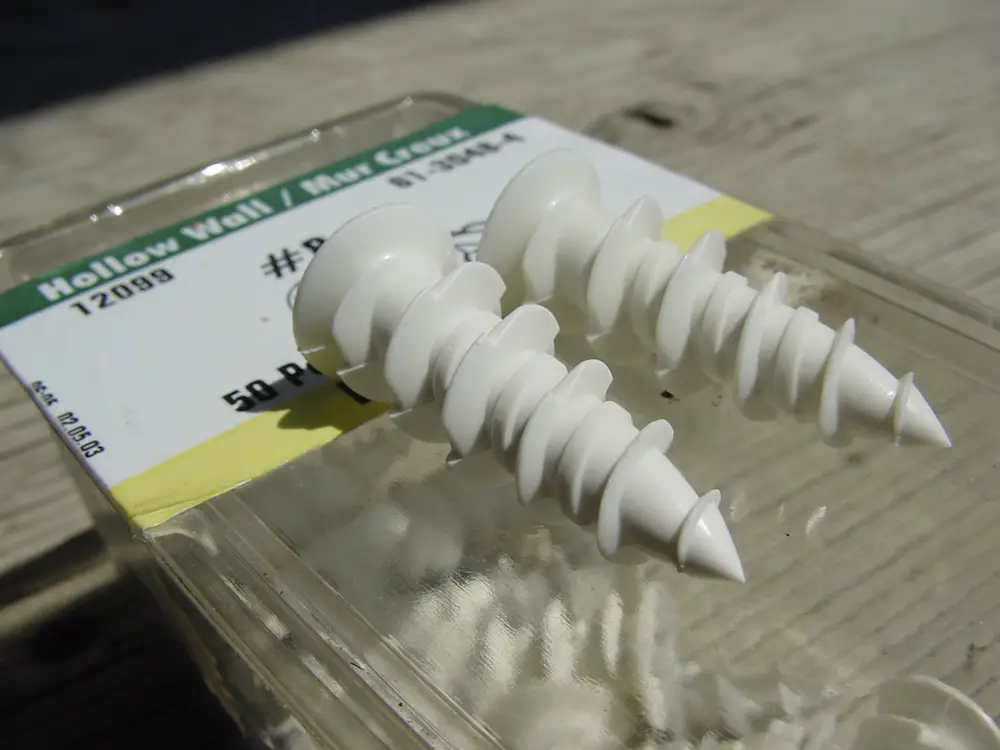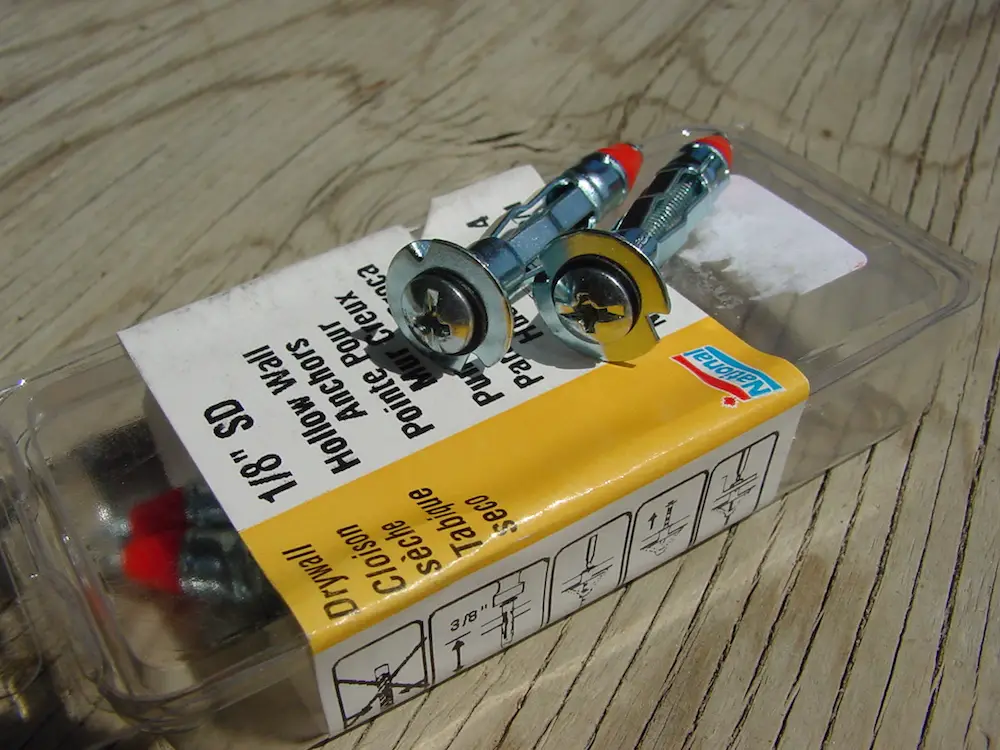Hollow wall anchors like these are among the strongest options for securing heavy objects to drywall. Metal wings expand and tighten against the inside face of the drywall after installation.
- Reading Time = 2 1/2 minutes
A: You’re wise to be concerned because a regular drywall anchor won’t reliably hold a ceiling lamp. There could be considerable weight involved, and the direction of pull is straight down, relying entirely on the grip in the drywall. That said, an ordinary hook will hold just fine if it’s driven into wood framing under the drywall. You’ll need to use a stud finder to identify the location of wood framing, then you’d have to be sure you hit it with the hook when it gets installed. Drill through the drywall but not beyond, then twist the hook in by hand into the wood. It should get tight and grip firmly.
If the preferred location of your lamp lands where there is no wood framing, use a hollow wall anchor instead. These have metal arms that open up once the unit is pushed in place and tightened. Hollow wall anchors hold a lot of weight safely because the arms grip the back face of the drywall. Hollow wall anchors are what you see below.
For objects lighter than a lamp, especially those to be installed on a wall not a ceiling, consider threaded drywall anchors. These are usually white plastic and have coarse threads that grip securely into predrilled holes in drywall when the anchor is twist in, like a screw. That’s what you see below.

Some brands of threaded anchors claim you can drive them directly into the drywall without predrilling, but this is wishful marketing in my experience. Drill a hole ahead of time in the drywall using a bit that’s the same size as the part of the anchor below the threads. Tighten the anchor into the hole, then drive a screw in afterwards. Just be careful. If you try to take out the screw again, it will come out with the anchor about half the time. And once the anchor has come out, it can’t grip into the hole again because the hole will be big and frazzled.
Many plastic drywall anchors are little more than plastic sleeves that you push into a pre-drilled hole in the drywall. I find these okay for light and medium-weight applications, but I prefer the threaded ones above for anything more than that.
Got some walls to patch, perhaps after taking a drywall anchor out? Or maybe before painting? Check out my complete online video course. Patching Walls Like a Pro shows you everything you need to know to fix all kinds of holes and damage in drywall. Click below to learn more and examine the course risk-free.
 Did you find this article useful? I hope so. Please consider helping me cover the cost of creating and publishing content like this. Click the “buy me a coffee” button below for a fast, safe and simple way to make a contribution. Thank you very much for helping to keep this website up and running.
Did you find this article useful? I hope so. Please consider helping me cover the cost of creating and publishing content like this. Click the “buy me a coffee” button below for a fast, safe and simple way to make a contribution. Thank you very much for helping to keep this website up and running.
– Steve Maxwell





